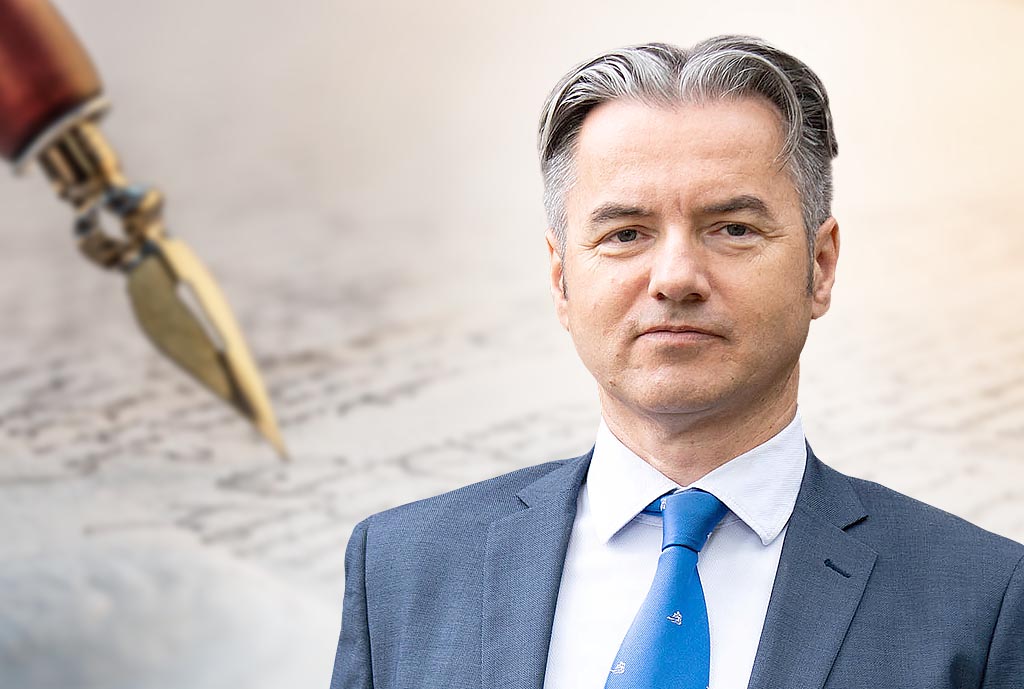By: Dr Metod Berlec
At the beginning of the month, it was twenty years since the Republic of Slovenia became a member of the European Union. It was part of the largest enlargement of the Union in the history of this association, as ten countries joined it simultaneously. In addition to Slovenia, on May 1st, 2004, Cyprus, the Czech Republic, Estonia, Lithuania, Latvia, Hungary, Malta, Slovakia, and Poland also joined the EU. Most of these countries were part of the communist Eastern bloc just a decade and a half earlier. By joining the EU (and NATO a good month before that), Slovenia fulfilled two main strategic foreign policy goals it set for itself after gaining independence. At the same time, our country adopted the common European currency and became part of the Schengen area three years after joining the EU (during the first Janša government).
This raises the question of whether Slovenia has optimally utilised the period of membership for its development. The country was a net recipient of funds from the European budget throughout and received several billion euros from cohesion funds, but as statistical data show, our country advanced less than most countries that joined the EU with us 20 years ago. As our economic journalist Vida Kocjan points out, the general conclusion is that Slovenia has mostly squandered its economic advantage after two decades in the EU. The purchasing power of the population in Slovenia has increased the least among the ten countries that joined the EU in 2004. Slovenia’s gross domestic product (GDP) per capita grew by two percent annually, while in other countries it grew much more. In the economy, it is also noted that other countries made better use of their entry into the EU by pursuing better economic policies. Businessman Dr Matej Kovač notes for our magazine that Slovenia had the best starting position among the new Central and Eastern European countries when it joined the EU, yet despite this, we have been overtaken by the Czech Republic, caught up by Estonia, and “if nothing changes for the better in our country, Poland and Croatia will also overtake us by the end of the decade”. In Slovenia, we reached the highest GDP per capita relative to the EU average in 2008, during the first Janša government, at 91 percent of the Union’s average. This was followed by the politically induced “big bang” from Finland, and the transitional left returned to power. During the financial-economic crisis, Pahor’s leftist government was unable to deal with the crisis, so in 2012/2013, the situation was resolved with unpopular but necessary public finance and reform measures by another Janša government.
SLOVENIA IS STILL CONTROLLED BY A POST-COMMUNIST CLIQUE THAT LEADS A SOCIALIST ECONOMIC POLICY AND PURSUES A NON-ALIGNMENT POLICY LIKE IN THE TIME OF THE COLLAPSED TITO’S YUGOSLAVIA …
We know the continuation. After the politically motivated CPC report at the beginning of 2013, the fall of the second Janša government soon followed. The next three governments, all left or centre-left, were led by Alenka Bratušek, Miro Cerar, and Marjan Šarec. These were governments that stagnated without a compass or any vision. In the meantime, the leader of the opposition, Janez Janša, was imprisoned based on a politically orchestrated judgment, but this decision was annulled by the Constitutional Court of the Republic of Slovenia. During the new coronavirus pandemic, the Prime Minister once again became the SDS leader Janša, who successfully led the centre-right government from March 13th, 2020, to June 1st, 2022. The last parliamentary elections brought to power a new incompetent leftist government, so today we are again facing a worse economic climate for the Slovenian economy, which is a consequence of the socialist actions of Golob’s government. Despite this, the government is again promising a salary increase in the public sector with the new wage reform, which the Slovenian public finances (state budget) will not be able to sustain in the long run. But what does that matter, it is important that the leftist “elite” led by Zoran Janković, Milan Kučan, and Danilo Türk celebrated “Victory Day” or the so-called liberation of Ljubljana in 1945 last week at the Ljubljana Castle, when we fell from the national-socialist totalitarianism to the communist totalitarianism. We have not yet completely escaped from it, as Slovenian politics is still led by communist-mafia godfathers from behind the scenes.
After leaving socialist Yugoslavia, upon Slovenia’s independence, we wanted to become the “new Switzerland”. But the premature dissolution of Demos and the fall of Peterle’s government and consequently mostly leftist governments (in the years 1990-2024, the transitional left was in power for 24 years, while centre-right governments only for 10) brought negative consequences. Today, Slovenia is still controlled by a post-communist clique that leads a socialist economic policy and pursues a non-alignment policy like in the time of the collapsed Tito’s Yugoslavia …

